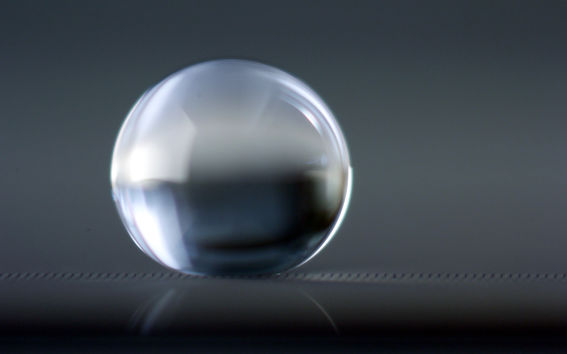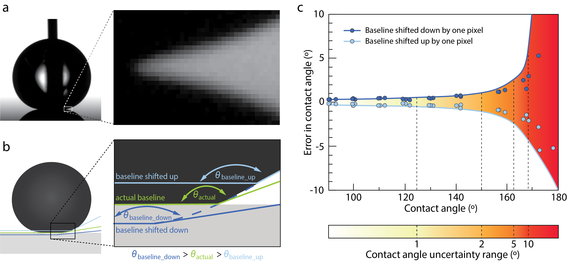Are we at the limits of measuring water-repellent surfaces?

How liquids are repelled by a surface – a property called “wettability”– is important for engineers to develop aircraft that resist ice formation; for fashion designers developing outdoor gear that repels rain and dirt; and every possible field in between. Researchers developing whole new surface materials in the lab also need accurate measurement of wetting properties so they can compare how different surfaces behave. For over two centuries, the standard method for defining how the droplet and the surface interact has been by measuring the “contact angle” of the droplet. The contact angle is the angle between the edge of the droplet and the surface it lies upon. Research at Aalto University is now calling the effectiveness of this method into question, in a perspective article published 15 March in the journal Science.
The problem with the contact angle method – according to Professor Robin Ras – is that it depends on both the accuracy of camera used to image the droplet and a subjective decision by the scientist about where in the image the droplet meets the surface. As scientists and engineers develop increasingly water-repellent materials, our ability to measure how effective they are decreases because the errors in the measurement get substantially worse as the ability to repel water increases.

Professor Ras’s team has carefully quantified the errors that arise from contact angle measurements, and his group are developing alternative methods for measuring how water-repellent surfaces interact with droplets. Newer methods which measure the adhesion or friction forces between the surface and the droplets not only have lower errors, but allow quantification in physical terms that is more relevant to the engineers developing new materials.
“We encourage researchers to rethink the relevance of contact angles in hydrophobic surface characterization and propose force as the next-generation benchmark quantity” says Professor Ras.
By raising the awareness among the wider scientific community that better methods for measuring surface wettability are out there, Professor Ras and his team hope that others will be able to make further discoveries currently unobtainable using traditional measurement techniques.
Link to the full article: http://doi.org/10.1126/science.aav5388
For further details contact:
Professor Robin Ras
[email protected]
http://physics.aalto.fi/smw
- Published:
- Updated:
Read more news

DeployAI Partners Gather for Heart Beat Meeting in Helsinki
The European DeployAI project's partners gathered for the Heart Beat meeting hosted by Aalto University Executive Education in Helsinki.
Aalto computer scientists in ICML 2024
Computer scientists in ICML 2024
In low-hierarchy organisations, even key policy issues are discussed in Slack
In a recent study, Aalto University alumn Lauri Pietinalho, a visiting scholar at New York University's Stern School of Business, and Frank Martela, an assistant professor at Aalto University, investigated how low-hierarchy organisations deal with shared policies in confrontational situations and how authority functions within them.